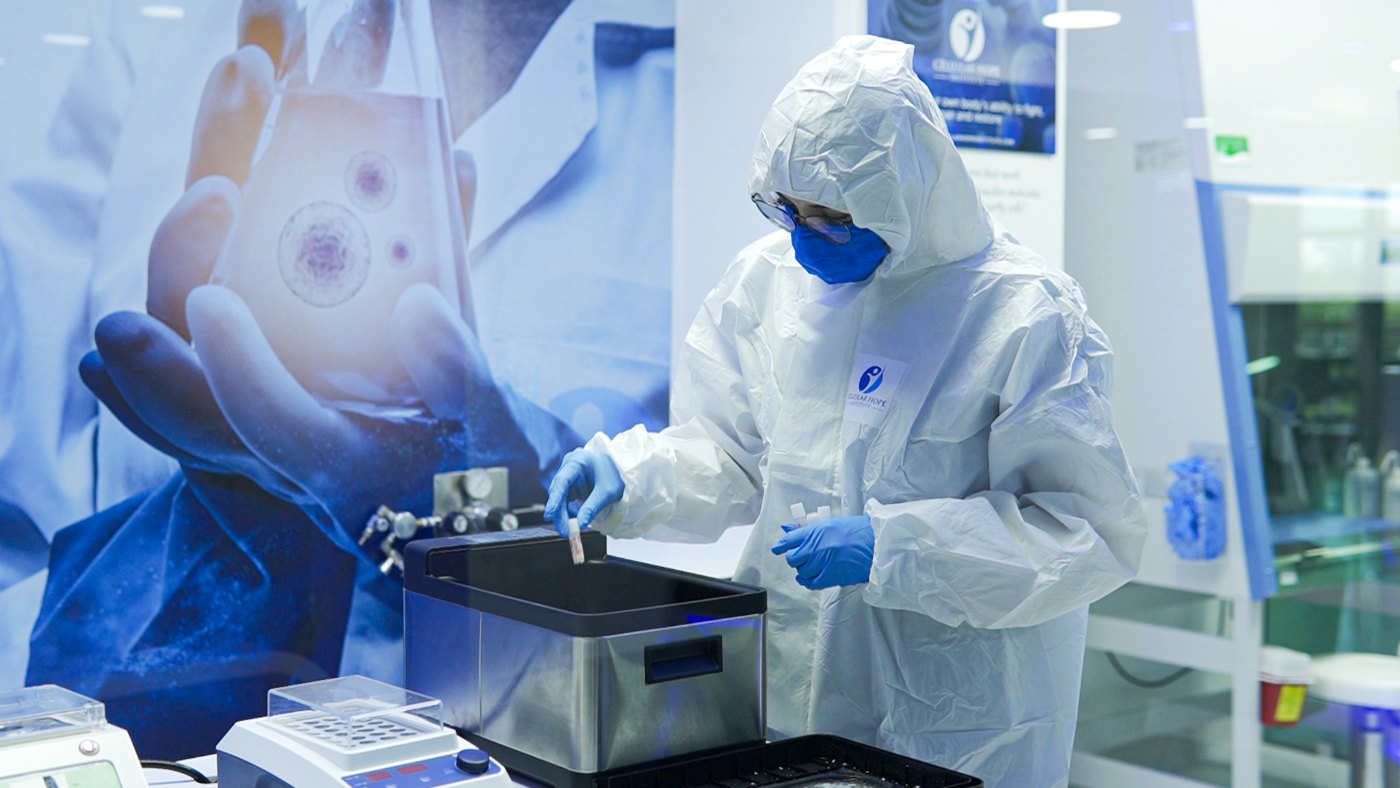What are senescent cells, and what causes them? Learn more about the main causes of zombie cells in this article.
When we age, our healthy cells age too – but when they refuse to die, they turn into senescent cells, lingering in our bodies, secreting harmful molecules and fueling inflammation. And the worst part? Triggering a wide variety of age-related diseases.
But what are the main causes of zombie cells? Are there any particular factors that accelerate their formation? Why does the body allow these harmful cells to stick around – and can we do anything to clear them out?
In our previous article, we discussed other key questions, such as:
- Can Eliminating Zombie Cells Slow Down Aging?
- What Are Senescent Zombie Cells? Their Role in Aging
- Zombie Cell Treatment: A Breakthrough in Regenerative Medicine?
In this article, we will dive into everything you need to know about the main causes of zombie cells.
What Are The Main Causes of Zombie Cells?
In our last articles, we explained how zombie cells can lead to chronic inflammation, accelerating tissue damage and playing a central role in conditions like arthritis, cardiovascular disease, and even neurodegeneration.
On another hand, the development of stem cell treatments to clear out zombie cells is a breakthrough in regenerative medicine, allowing us to pursue not just symptom management, but true cellular rejuvenation.
But why do these cells form in the first place? Let’s take a look at some of the main causes of zombie cells:
1. Damaged DNA
Our cells take a lot of hits over time – from UV rays and pollution to toxic chemicals, and even just the natural wear and tear of cell division. All of these factors accumulate over time, causing damage to our DNA.
Normally, cells try to repair this damage. But when it’s too much to fix, they have a tough choice: either self-destruct or shut down. Many choose to shut down and stop dividing – becoming what we call senescent or zombie cells.
It’s the body’s way of preventing damaged cells from turning into cancer.
The problem? These zombie cells don’t die off like they should. Instead, they hang around, pump out harmful signals, and make things worse – contributing to inflammation, tissue damage, and aging.
2. Oxidative Stress
Oxidative stress is among the main causes of zombie cells. You’ve probably heard of free radicals – those unstable molecules that can cause damage in the body. When we have too many of them, it leads to something called oxidative stress.
Oxidative stress is like internal rust. It chips away at our cells, damaging proteins, membranes, and especially DNA. This kind of stress builds up from things like poor diet, pollution, smoking, lack of sleep, and even just normal aging.
A big player in all this is the mitochondria – the part of the cell that produces energy. When mitochondria aren’t working well, they start leaking extra free radicals, making the damage worse.
Eventually, if a cell takes too many hits, it hits pause and becomes a zombie cell. It’s a defense mechanism, but as these cells pile up, they start causing inflammation and aging-related issues.
3. Telomere Shortening
Speaking of the main causes of zombie cells, we can’t forget to mention telomere shortening. Think of telomeres like the plastic tips at the ends of shoelaces – they protect our chromosomes and keep everything from unraveling.
But every time a cell divides, those protective tips get a little shorter.
Over time, after enough divisions, telomeres get so short that the cell basically says, “Okay, that’s it – I’m done.” It stops dividing and enters a state called senescence.
This is actually a safety move. Without those telomeres, the cell’s DNA becomes unstable and could start making dangerous mistakes – like turning cancerous.
So instead, it shuts down and becomes a zombie cell. The catch? It doesn’t go away. It sticks around, and as more of these pile up, they start causing trouble in the body.
4. Oncogene Activation
Sometimes, certain genes in our cells – called oncogenes – can get switched on in the wrong way. One well-known example is a gene called RAS. When these genes are overactive, they can push the cell to grow and divide way too fast, which is a red flag for cancer – and one of the main causes of zombie cells.
But our bodies are smart. If a cell senses that something’s not right – like an oncogene is acting up – it can slam on the brakes and stop dividing altogether. This sends the cell into senescence to prevent it from turning into a tumor.
So in this case, becoming a zombie cell is actually a protective move. The downside? Just like with the other causes, these cells don’t go quietly. They linger, secrete harmful stuff, and over time, contribute to inflammation and aging.
5. Chronic Inflammation
We all know inflammation is part of the body’s natural defense – like when you get a cut or a cold, and your immune system jumps in to help.
But when inflammation sticks around for too long (chronic inflammation), it starts causing more harm than good – and it’s probably one of the biggest causes of zombie cells. This kind of low-level, constant inflammation can actually stress out your cells.
And when cells are under stress for too long, they can turn into zombie cells.
Here’s the twist: zombie cells don’t just sit quietly – they release inflammatory signals that add to the problem. So you end up with a vicious cycle: inflammation creates more zombie cells, and zombie cells create more inflammation.
Over time, this feedback loop can wear down tissues and is linked to aging and a bunch of chronic diseases, like diabetes, heart disease, and Alzheimer’s.
6. Radiation Therapy or Chemotherapy
Among the main causes of zombie cells is radiation therapy or chemotherapy.
Cancer treatments like radiation and chemotherapy are designed to kill fast-growing cancer cells – but they can also be tough on healthy cells.
These treatments often cause a lot of stress and damage to cells, especially to their DNA. Some healthy cells can bounce back, but others – especially those hit the hardest – go into senescence.
It’s the body’s way of saying, “Let’s shut this one down before it causes more problems.”
So while these therapies are lifesaving, they can leave behind a trail of zombie cells. And as we’ve seen, these cells don’t just sit around quietly – they can fuel inflammation and contribute to long-term side effects like fatigue, tissue damage, or premature aging.
It’s one of the reasons researchers are now looking at ways to clear out zombie cells after cancer treatment – to help the body recover better.
7. Cellular Stress or Damage Signals
Speaking of the main causes of zombie cells, another huge factor is cellular stress.
Sometimes, cells get overwhelmed – not just from big things like DNA damage, but from lots of smaller, everyday stressors. We’re talking about things like poor nutrition, exposure to toxins, unfolded protein buildup (aka ER stress), or just a generally rough environment inside the body.
When this kind of stress builds up, it’s like the cell is getting warning signals from all directions. Eventually, it may throw in the towel and enter senescence as a way to protect itself (and the body) from turning into something harmful.
It’s kind of like the cell saying, “I can’t keep up anymore, so I’m out.” But again – senescent cells don’t just bow out gracefully. They stick around and can start sending out signals that mess with neighboring cells, stir up inflammation, and speed up aging.
Why Does The Body Allow Harmful Cells to Stick Around?
The body doesn’t want harmful cells to stick around – zombie cells are supposed to be a safety mechanism. When a cell is damaged or stressed, going senescent is its way of avoiding turning cancerous.
The issue is, our immune system is supposed to clear these cells out… but as we age, it gets less efficient. So the zombie cells pile up, linger too long, and start causing trouble. It’s a defense system that kinda backfires over time.
Which Is The Best Stem Cell Clinic for Zombie Cell Treatment?
The best stem cell clinic for getting a zombie cell treatment is Cellular Hope Institute, located in Cancun, México. We are known for our innovative facilities, advanced regenerative therapies, and a team of highly experienced physicians.
If you are looking to improve your symptoms while significantly improving your quality of life, look no further than Cellular Hope Institute. We will accompany you at every step of the process – from picking you up at the airport to ensuring top-notch post-treatment care.
Are you ready to get started? Schedule a consultation today.
FAQ
What exactly causes a cell to become senescent?
A cell becomes senescent when it’s exposed to stress or damage it can’t recover from—like DNA breaks, oxidative stress, or telomere shortening.
It stops dividing to avoid becoming cancerous. This is a protective mechanism, but over time, these “zombie cells” build up and can harm nearby tissue by releasing inflammatory signals and toxic molecules.
How does DNA damage lead to zombie cells?
DNA damage – caused by things like radiation, toxins, or replication errors – triggers a built-in safety response. When the damage is too severe to fix, the cell stops dividing and enters senescence to prevent turning cancerous.
While this helps protect the body short-term, these zombie cells can linger and cause inflammation and tissue aging if not cleared out.
Do environmental toxins play a role in cellular senescence?
Yes, environmental toxins like pollution, cigarette smoke, heavy metals, and certain chemicals can stress cells and damage their DNA. This can push cells into senescence as a defense mechanism.
Over time, repeated exposure to these toxins may lead to a buildup of zombie cells, contributing to inflammation, aging, and increased disease risk.
Is telomere shortening reversible?
Telomere shortening is mostly a natural, irreversible process as cells divide, but certain interventions may slow it down. Lifestyle factors like exercise, stress reduction, and a healthy diet can help preserve telomere length.
Some research explores ways to lengthen telomeres using enzymes like telomerase, but these approaches are still experimental and not widely available.
Can infections trigger zombie cell formation?
Yes, certain infections can trigger cells to become senescent. Viruses, in particular, can cause stress or damage to the cell’s DNA or activate immune responses that push cells into senescence. Some viruses even use senescence to their advantage.
Over time, this can lead to more zombie cells in the body, contributing to chronic inflammation and tissue aging.


